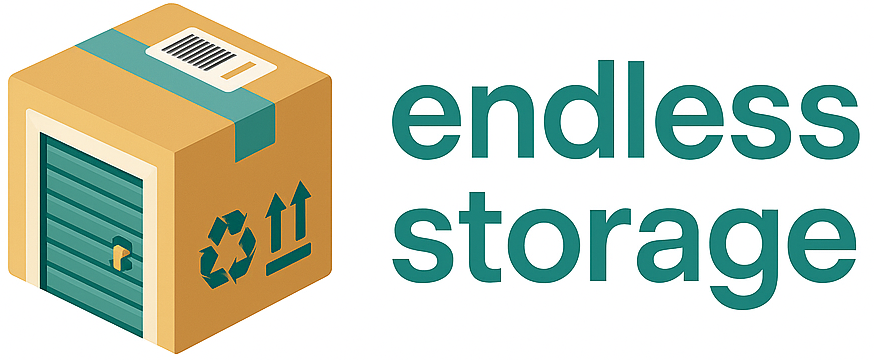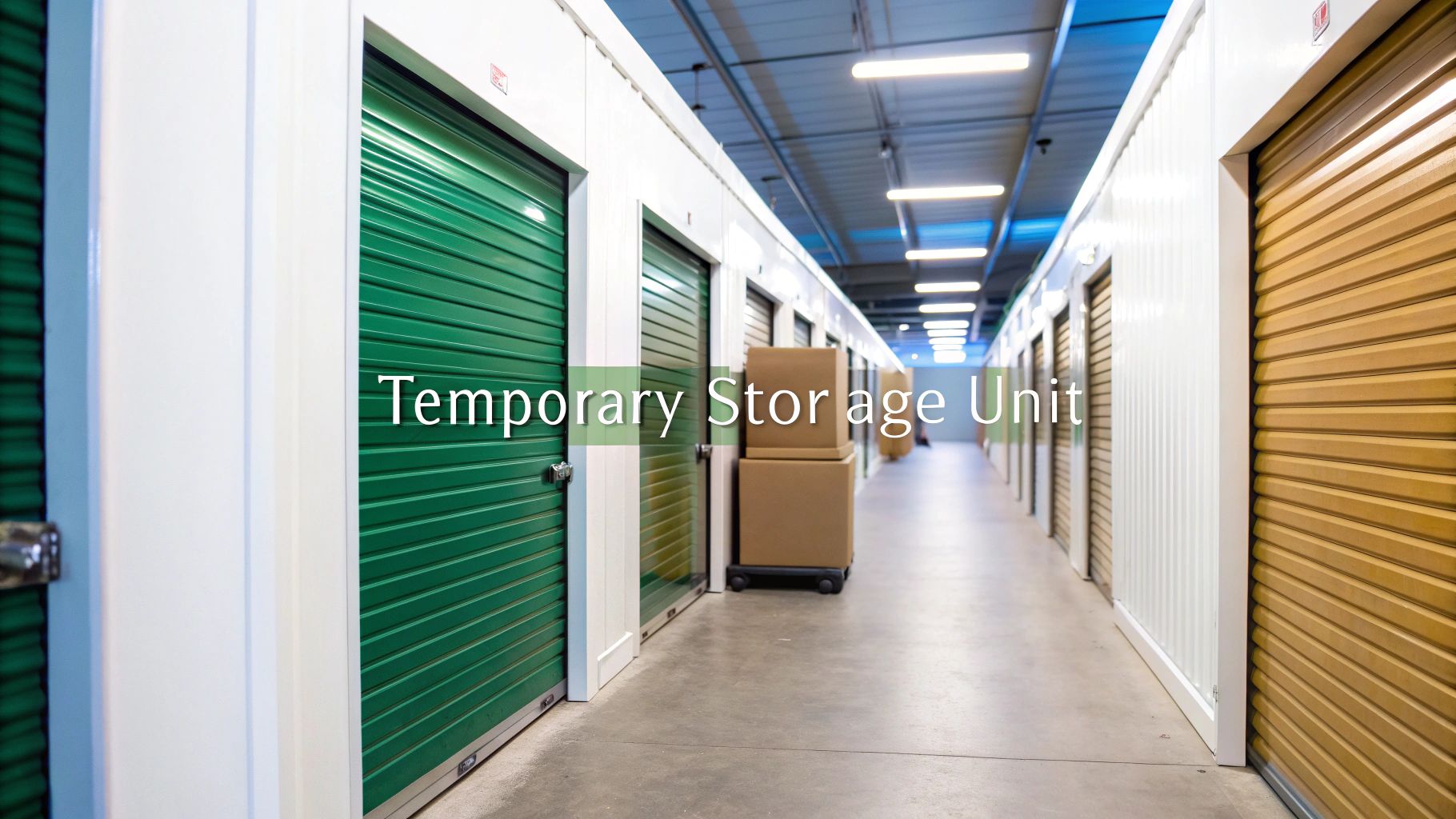A temporary storage unit is really just a flexible space you rent for the short haul, designed to help you navigate life's bigger transitions. Think of it as your own personal home base on demand—a secure, private spot for your belongings exactly when you need extra room, but only for as long as you need it.
When Do You Really Need Temporary Storage?
Life is full of moments that demand just a little more space than you have. A temporary storage unit can be a lifesaver during these times, stepping in to prevent stress and chaos by giving your things a safe place to land. Whether you're planning a renovation or dealing with a sudden move, this kind of flexible solution adapts to your timeline.
Instead of just seeing it as an empty box, think of it as a strategic tool. It's what keeps your home livable during a dusty kitchen remodel. It's the bridge that connects your old apartment to your new house when the moving dates don't line up perfectly.
Common Triggers for Needing Short-Term Space
Certain life events almost always create a need for some temporary overflow space. Spotting these situations ahead of time can make the whole process feel a lot less frantic.
- Moving Between Homes: It's a rare thing when move-out and move-in dates sync up perfectly. A storage unit keeps your possessions safe in that gap, so you're not left scrambling.
- Home Renovations: A kitchen or bathroom remodel kicks up a ton of dust and disruption. Moving furniture and appliances into storage protects them from damage and clears the way for contractors to work efficiently.
- Downsizing or Decluttering: When you're moving to a smaller home, you need time to sort out what to keep, sell, or donate. A unit gives you that breathing room without cluttering up your new, smaller space.
- Seasonal Transitions: Stashing bulky winter gear, patio furniture, or all those holiday decorations frees up a surprising amount of closet and garage space during the off-season.
To make it even clearer, here’s a quick look at how these common scenarios play out.
Common Scenarios for Using Temporary Storage
As you can see, the need for temporary storage is almost always tied to a specific project or life change with a clear beginning and end.
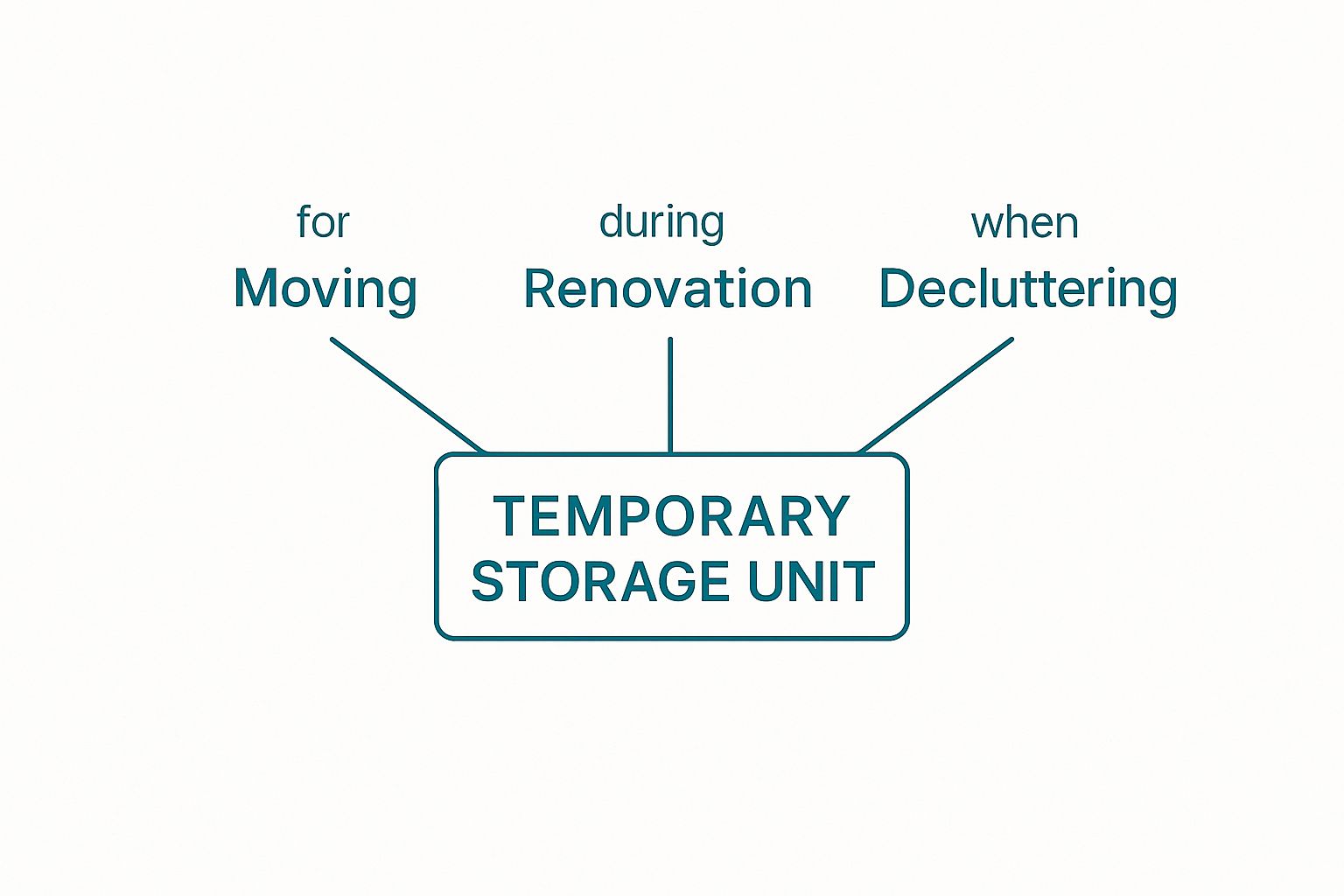
The image above really drives it home: major life changes like moving, renovating, and decluttering are the core reasons people turn to flexible storage solutions.
The Link Between Mobility and Storage Demand
It's no surprise that how often we move is a huge factor driving the need for short-term storage. Recent survey data found that 37% of self-storage tenants planned on moving within the next 6 to 12 months, and another 23% were considering it.
That adds up to a potential moving population of over 60%, which shows just how frequently people rely on storage to get through those transitional periods.
In essence, a temporary storage unit isn't just about storing things; it's about buying yourself time, flexibility, and peace of mind during life's most demanding projects.
Understanding these practical uses helps clarify if this is the right move for you. To dig deeper into the specifics, you can learn more about how temporary self storage works in our detailed guide. It’s the perfect way to manage your stuff without getting locked into a long-term commitment.
Finding the Right Storage Unit Size and Type
Picking a temporary storage unit can feel like guesswork. Go too big, and you're paying for air. Go too small, and you're stuck. The real secret is matching the unit’s features to exactly what you plan on storing. This simple step saves you from overspending or, even worse, choosing a unit that could ruin your belongings.
Your first big decision is whether to go with an indoor unit or a drive-up unit. Drive-up access is a lifesaver when you’re dealing with heavy, bulky items like couches, fridges, or stacks of boxes. You can pull your car or truck right up to the door and unload directly. On the other hand, indoor units are tucked away inside a larger building, giving your stuff an extra shield against the weather.
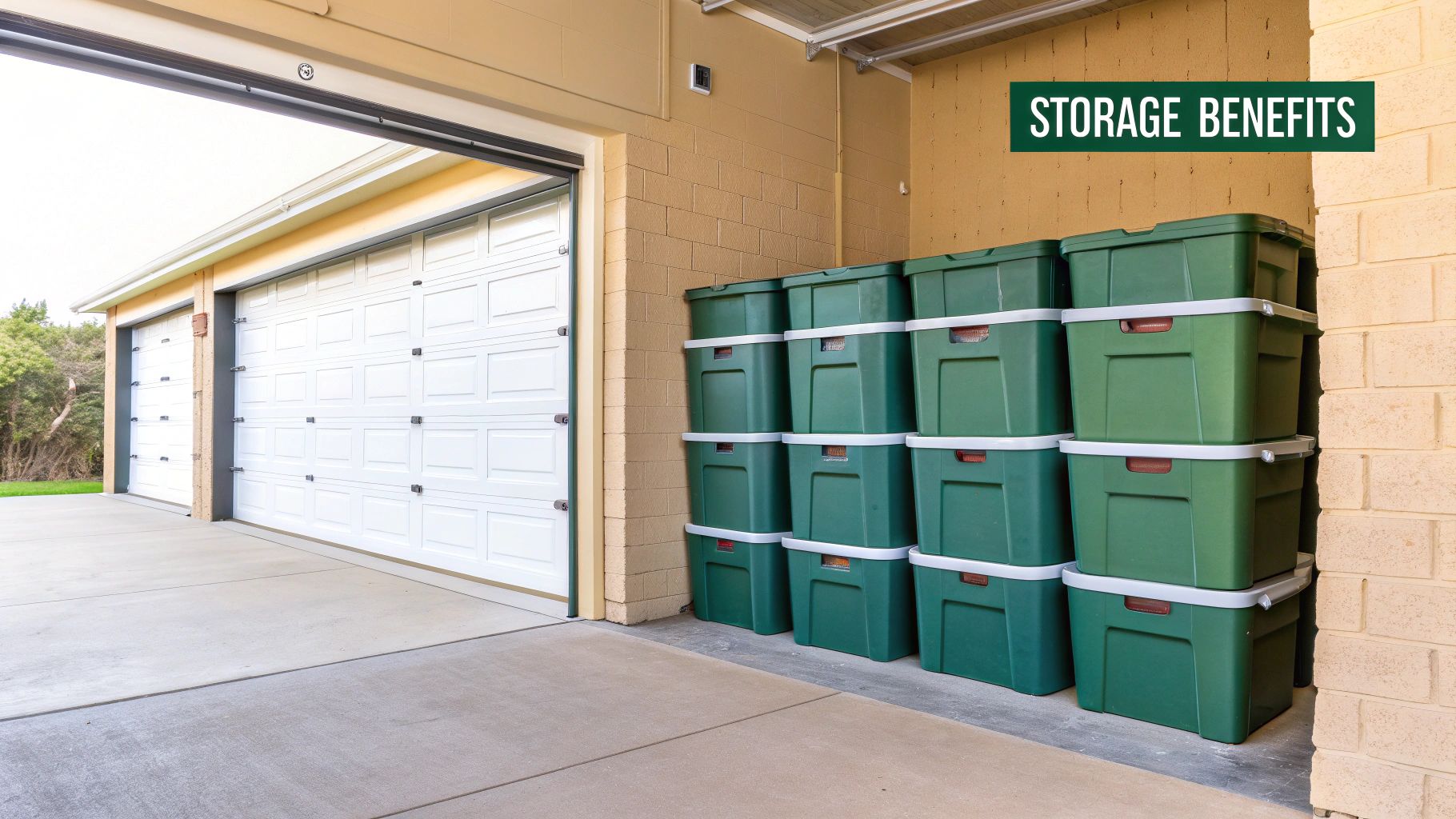
Why Climate Control Is a Non-Negotiable for Certain Items
Beyond just being indoors, climate control is probably the most critical feature for protecting sensitive items. A climate-controlled unit works like the thermostat in your home, keeping the temperature and humidity steady all year long—usually somewhere between 55 and 80 degrees Fahrenheit. This isn't just a nice-to-have feature; for some things, it's absolutely essential.
Think about what a sweltering summer or a freezing winter can do. Wood furniture can warp and crack. The sensitive guts of your electronics can corrode. Old photos and important papers can get musty and grow mildew. Without climate control, you’re basically gambling with the very things you’re trying to keep safe.
You’ll definitely want a climate-controlled unit if you’re storing any of these:
- Wooden or leather furniture: This stops pieces from splitting, cracking, or warping.
- Electronics: Protects delicate internal parts from moisture and extreme temperatures.
- Important documents and photos: Keeps them safe from yellowing, mildew, and fading ink.
- Artwork and musical instruments: Preserves materials that are super sensitive to environmental shifts.
- Antiques and collectibles: Maintains the pristine condition—and value—of your prized possessions.
Here's the bottom line: if you wouldn't leave it in a hot car or a damp garage for a year, it needs climate control.
Visualizing the Right Unit Size
Once you’ve settled on the type of unit, it’s time to figure out the size. It’s so easy to look at your stuff and completely misjudge how much space it will take up. The trick is to stop thinking in square feet and start thinking in familiar terms.
A good rule of thumb is to think of storage units in terms of familiar spaces. This mental shortcut makes it much easier to visualize whether your belongings will fit comfortably.
Here’s a quick guide to help you picture it:
By picturing your belongings in one of these everyday spaces, you can make a much smarter choice. You'll get a unit that fits your needs perfectly, without paying for a single square foot you don't use.
Understanding What Drives Storage Unit Costs
Renting a temporary storage unit seems simple enough, but the final price on your bill can sometimes feel like a moving target. The monthly rate you see isn't just one number; it’s a mix of several key factors that all play a part. Getting a handle on these drivers is the first step to setting a realistic budget and avoiding any nasty surprises.
The most obvious factor is unit size. Just like with an apartment, you pay for the space you use. A tiny 5x5 unit, roughly the size of a walk-in closet, will always be cheaper than a sprawling 10x20 unit designed to hold the contents of a three-bedroom house.
But where that unit is located plays a huge role. A facility in a dense city center like Brooklyn will have much higher overhead—think property taxes, rent, and labor costs—which gets passed on to you. The exact same size unit in a suburb just a few miles away could be significantly more affordable.
The Impact of Special Features and Rental Terms
Beyond just size and location, any special features will bump up the monthly cost. A climate-controlled unit is the perfect example. It’s an absolute must for protecting sensitive items like wood furniture, electronics, or artwork from extreme temperatures and humidity. That extra peace of mind, however, typically costs 25-50% more than a standard unit.
The length of your stay also matters. Many facilities will offer a better deal if you commit to a longer-term lease. But for a true temporary need, you’ll likely be on a month-to-month plan. This gives you total flexibility to leave when you want, but it often comes at a slightly higher monthly price.
The price you see advertised is rarely the full story. Always ask about the total monthly cost, including any mandatory fees and insurance, to get a true picture of your financial commitment.
Uncovering the Extra Costs
The base rent is just where it starts. A few extra costs can easily catch you off guard if you aren't ready for them. To avoid getting blindsided, keep an eye out for these common add-ons:
- Administrative Fees: This is a one-time fee, usually non-refundable, that covers the cost of setting up your account when you first sign up.
- Mandatory Insurance: Pretty much every storage facility requires you to insure your belongings. They'll happily sell you their own policy, but you might be able to use your existing homeowner's or renter's insurance if it covers off-site storage.
- A High-Quality Lock: You’re responsible for securing your own unit, which means you need to buy a lock. Facilities often sell high-security cylinder or disc locks right on-site for your convenience.
To help you see how these factors work together, here’s a quick breakdown for a standard 10x10 unit:
Cost Factor Breakdown
Factoring in these extras from the beginning is key to building an accurate budget. For an even more detailed look, our guide on how much storage costs monthly digs deeper into pricing. Once you know what to expect, you can find a temporary storage unit that fits both your stuff and your wallet perfectly.
How to Choose a Safe and Reliable Storage Facility
Picking the right temporary storage unit isn't just about finding the cheapest option—it’s about getting peace of mind. You’re trusting a facility to be a fortress for your belongings, so it’s worth taking the time to vet a few places to make sure they’re truly committed to safety and upkeep. Think of this as your personal checklist for finding a provider you can actually trust.
The first thing to look for are the absolute must-have security features. At a bare minimum, a facility needs to have gated electronic access. This is the first line of defense, making sure only paying tenants can get onto the property in the first place. This should be backed up by 24/7 video surveillance watching over key spots like the gate, hallways, and loading areas. And don’t underestimate the value of having an on-site manager during business hours; it adds a huge layer of security and accountability.
Evaluating Accessibility and Upkeep
Beyond a solid security system, you need to think about the practical stuff, like accessibility and general cleanliness. Always check the facility’s gate hours and make sure they actually work with your schedule. There’s nothing worse than showing up after a long day at work only to discover you’re locked out.
A well-kept property is a dead giveaway of a professional operation. When you go for a tour, put on your detective hat and pay attention to the little things:
- Cleanliness: Are the hallways, grounds, and the units themselves free of trash and junk?
- Pest Control: Can you see any signs of a pest management plan? Look for traps and don’t be shy about asking how often they have a professional service come out.
- Lighting: Is the whole place—inside and out—lit up like a Christmas tree? Good, bright lighting is a major deterrent for thieves and makes you feel safer.
A facility's dedication to cleanliness and maintenance directly reflects its overall commitment to protecting your stored items. A dusty, poorly lit property often signals bigger problems below the surface.
This is especially important in today's market. The global self-storage industry was valued at over $58 billion in 2023 and is only expected to grow as more people move into cities. With so many options popping up, you can afford to be picky. Understanding the key features of modern self storage facility design can also give you a leg up, showing you what separates a top-tier facility from an average one.
Finally, do your homework and read recent online reviews. What past and current customers have to say is pure gold—it’s the unfiltered truth about how the place is run, its customer service, and its real-world security. Taking these steps will help you lock down a safe, reliable partner for your stuff. For a deeper dive, check out our complete guide on what to look for in a self storage facility.
Packing Your Belongings Like a Pro
How you pack your stuff is just as important as where you decide to store it. Let's be real, a smart packing strategy does more than just get your things into a temporary storage unit; it ensures they come out in the exact same condition you left them. This isn't just about tossing things in boxes—it's about making your life easier down the road.
Think of packing as future-proofing your belongings. A great first step is to thoroughly clean and dry any appliances you're storing, like refrigerators or washing machines. This simple move prevents musty smells and mildew from setting in while they sit. For bulky furniture, disassembling items like bed frames or tables can save a shocking amount of floor space, which might even let you rent a smaller, cheaper unit.
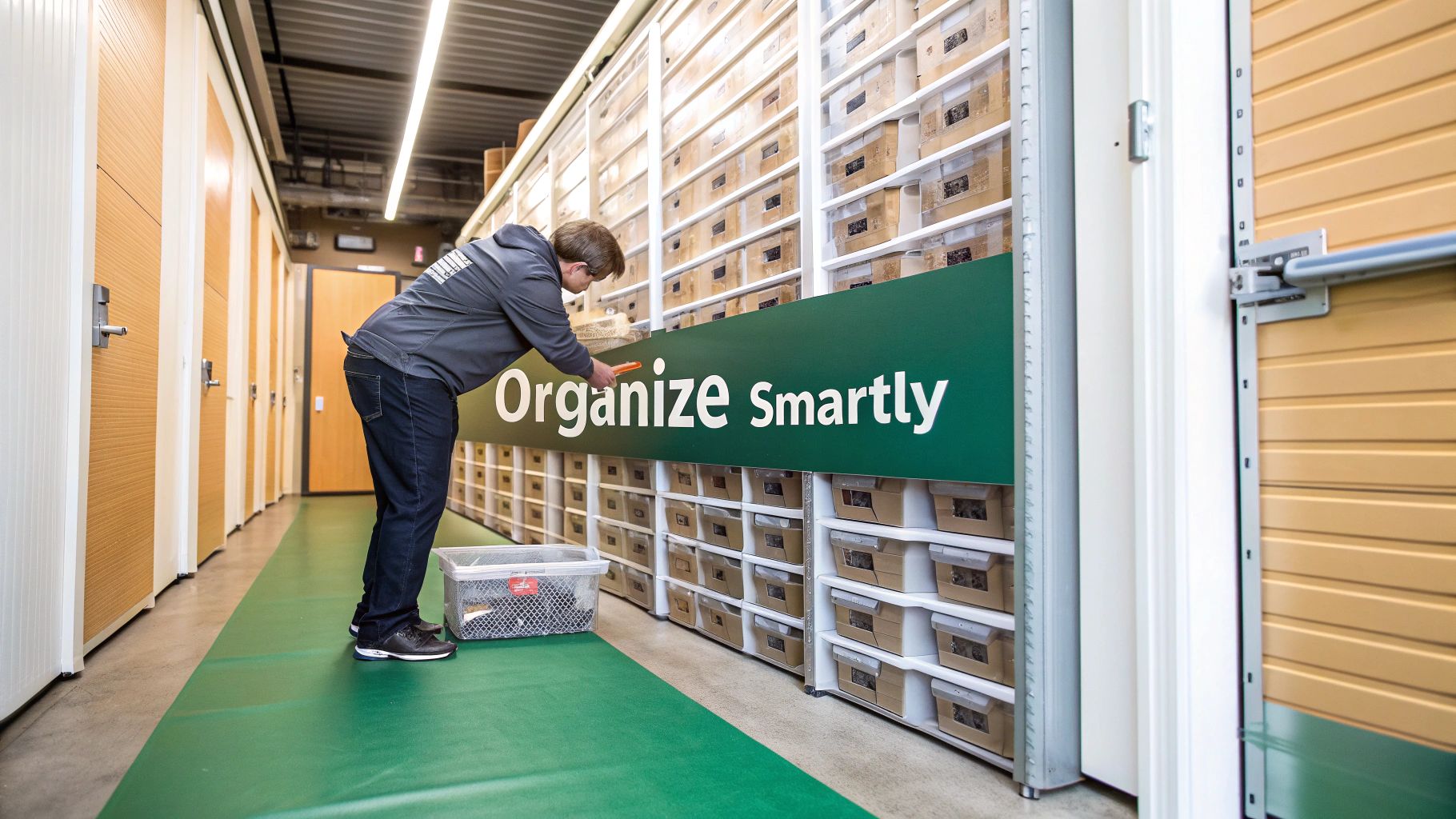
Essential Packing and Organizing Strategies
Investing in quality packing materials right from the start pays off big time. Sure, grabbing free boxes from the local grocery store might seem like a thrifty move, but they’re often flimsy and just can’t handle heavy loads without buckling.
- Use Sturdy, Uniform Boxes: New boxes of the same size are a game-changer. They stack securely, letting you maximize your unit's vertical space without worrying about things getting crushed.
- Protect Fragile Items: Take the time to wrap delicate items individually in packing paper or bubble wrap. It's also crucial to fill any empty spaces in the boxes to stop things from rattling around and breaking.
- Cover Furniture and Mattresses: Don't skip this! Specially designed furniture and mattress covers are your best defense against dust, moisture, and accidental scuffs.
Different items need different packing techniques. For example, knowing how to pack clothes for storage can be the difference between pulling out fresh garments and finding them ruined by moths or mildew.
Think of your packed boxes as building blocks. With strong, uniform blocks, you can build a stable and efficient structure. With mismatched, weak ones, you risk a collapse.
Loading Your Unit for Easy Access
Once everything is packed and ready, the way you load the unit can make a world of difference. Resist the urge to just cram everything in to fill the space. A little bit of strategic planning will save you a massive headache if you need to grab something before your final move-out day.
The single most important tip is to create an access aisle right down the middle of your unit. This simple walkway lets you reach items way in the back without having to unload half your stuff. Put the things you know you won't need anytime soon in the very back and along the sides. And always, always put heavier boxes on the bottom to create a stable base, stacking the lighter ones on top.
Finally, take a few extra minutes to label every single box. Seriously. Write the contents and the room it belongs to on multiple sides. A pro move is to create a simple inventory list—even just a quick note on your phone with a corresponding box number. This little bit of effort transforms your storage unit from a chaotic pile of mystery boxes into a well-organized library of your belongings, ready for an effortless retrieval.
Exploring Alternatives to Traditional Storage
While a standard temporary storage unit is a fantastic solution for many situations, it’s not the only player in the game. The world of storage has branched out, offering some really smart alternatives that might be an even better fit—especially if convenience is what you're after.
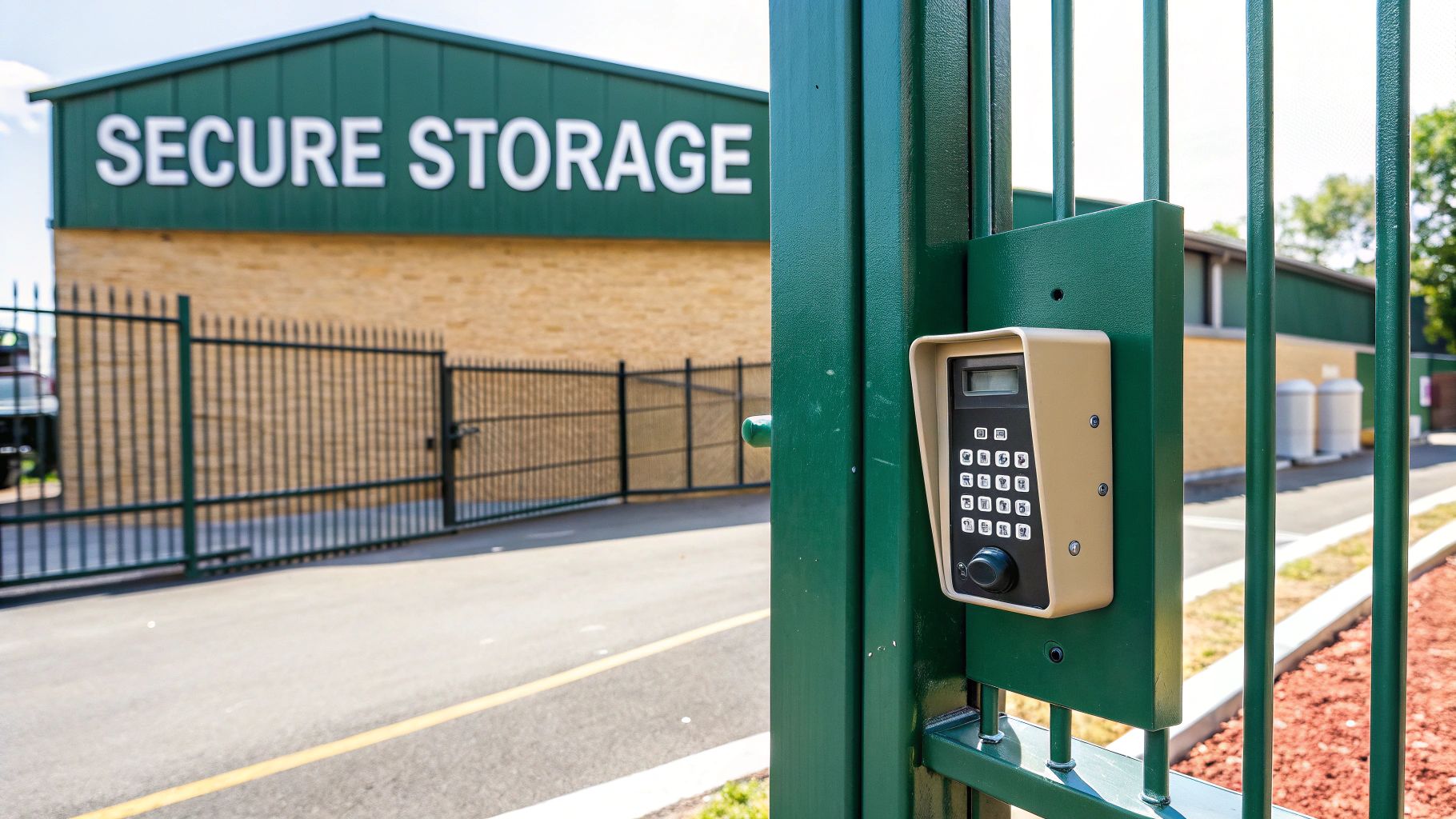
These newer options completely flip the old model of you loading up a car and hauling everything to a facility. Instead, they bring the storage right to your doorstep, which can be a massive help during an already busy time.
Portable On-Demand Containers
You’ve probably seen them sitting in driveways—those big, branded containers from companies like PODS. Portable storage containers cleverly merge moving and storage into one smooth operation. A company drops off a container at your house, you load it up on your own schedule, and then they handle the rest. They can either move it directly to your new home or take it away to their own secure facility for safekeeping.
This is an amazing option if you’re in the middle of a move. It totally cuts out the hassle of renting a truck and doing the back-breaking work of loading and unloading your stuff twice (once into storage, and then all over again at your new place). To see how the different services compare, you might want to check out our guide to the top 8 portable storage containers of 2025.
Valet or On-Demand Storage
For the ultimate hands-off experience, especially for city dwellers short on space and time, valet storage is a game-changer. Think of it as a personal concierge for your belongings. A team comes right to your door, picks up the items you want to store (often photographing and cataloging everything for you), and whisks them away to a secure warehouse.
Need something back? You just log into an app, tap the item you want, and they deliver it to you.
This service is perfect for anyone without a vehicle or the time to schlep boxes back and forth. It turns storage from a physical chore into a simple, on-demand service.
The demand for these kinds of flexible options is undeniable. The self-storage industry grew by a whopping 25.6 million net rentable square feet in 2023 alone. To really get a handle on all the alternatives, it also helps to understand the fundamental differences between warehousing and storage, as they cater to very different needs.
Common Questions About Temporary Storage Units
Even when you think you've got it all figured out, a few last-minute questions can pop up right as you're about to rent a storage unit. Getting these common concerns sorted is the final step to making sure you're making a confident choice, with no surprises down the road.
What Kind of Insurance Do I Need for My Belongings?
Most storage facilities will require you to have some kind of insurance for your stuff. It's just a smart way to protect everyone involved.
While they almost always offer their own protection plans right at the counter, it's a good idea to check your current homeowner's or renter's insurance policy first. You might be surprised to find that it already covers items stored off-site. Just be sure to double-check the coverage limits to ensure your belongings are fully protected against the unexpected.
Are There Any Items I Am Not Allowed to Store?
Absolutely. Every storage facility has a strict list of prohibited items, and it's all about safety. This list will always include common-sense no-gos like flammable or hazardous materials, perishable food, live plants, and animals.
It's also wise to avoid storing things that are truly irreplaceable, like priceless heirlooms or items with deep sentimental value. Your rental agreement will spell out every single restriction, so give it a good read.
Make sure you review that prohibited items list carefully before you even think about packing a single box. Storing something you shouldn't can get you evicted from the unit and could even lead to fines.
How Do I End My Storage Unit Rental?
Getting out of your rental is usually a breeze, since most places operate on a simple month-to-month basis.
Typically, you'll just need to give them written notice, often 10-15 days before your next payment is due. When it's time to go, make sure the unit is completely empty and that you've removed your lock. If you don't, you risk getting hit with a bill for another month.
Ready to clear the clutter without the hassle? With Endless Storage, you can store your items by the box, starting at just $7.99 per month. We handle the pickup and delivery, so you never have to visit a storage unit again. Find your perfect storage solution today at https://www.endless-storage.com.
Frequently Asked Questions
Unveiling the Secrets to Effortless Storage
Endless Storage is available nationwide. You pick a plan, tell us where to pickup, and we'll send a UPS van to collect, whichever state you're in.
Your shipping label will be sent to your email within a few minutes, if not instantaneously. It can also be accessed through your customer profile.
Your box will be shipped to one of our climate controlled self storage facilities in our closest self storage facility. Our manager will accept your package, notify you that your box has been received, and securely stored. Only our managers will have access to Endless Storage boxes.
Email us at admin@endless-storage.com click to live chat with us, or send us a message below.
Never! We're committed to transparent pricing with no surprises. You'll lock in your rate with no hidden fees and no long-term contracts.
Fast access guaranteed! Your boxes will arrive at your doorstep within 48 hours of requesting them back. Need to check on delivery? We provide tracking information for complete peace of mind.
Totally flexible! Store month-to-month with no long-term commitment and cancel anytime.
Everything's online! Use your account dashboard to:
• Set up automatic monthly payments
• Request box returns
• Update your address
• Order additional boxes
• Track shipments
Your boxes are insured up to $100 each. Our customer service team will help you file any necessary claims and resolve issues quickly.
Don't worry – we'll email you right away if there's a payment issue. Your items stay safe, though you may have temporary service interruption or late fees until payment is resolved.
When you request our free storage kits, you'll have 30 days to send in your boxes to activate your 3 months of free storage. Think of it like starting a gym membership – your activation window begins when you receive your kits, and your full free trial begins once you send in your first box. During your free months, you'll experience our complete storage service at no cost.
Your 30-day activation window begins when you receive your storage kits. We'll send you an email confirmation when your kits are delivered, marking the start of your activation period.
If you haven't sent any boxes for storage within your 30-day activation window, your free trial will expire and we'll begin charging the regular monthly rate of $9.99 per box. This helps ensure our storage kits go to customers who are ready to use our service.
A box costs $9.99 per month to store (plus sales tax). This price includes free shipping for standard boxes under 50 lbs. and smaller than 16"x16"x16"
Log into your Endless Storage account, locate the box you would like returned, and simply click Return My Box.
Yes, each box stored with us is insured for up to $100 throughout transit as well as the duration of storage within our facilities.
Your box will be at your doorstep within 48 hours of you requesting it back.
Store 10+ boxes? We'll pick them up for free! After your purchase, we'll contact you to schedule a convenient pickup time and arrange UPS collection.
We trust UPS with all shipments, and every box includes $100 insurance coverage. You'll receive tracking information to monitor your items' journey.
Yes! Visit any of our locations by appointment. Just bring a photo ID matching your customer profile.
For everyone's safety, we can't store hazardous materials, firearms, or perishables. All items must fit within our standard boxes.
It's easy! Order your storage kit online, and we'll ship it to you within 1-2 business days. Your shipping labels will be emailed instantly and available in your account.
We're here to help! Email us at admin@endless-storage.com, use our live chat, or send us a message through your account.
To cancel your storage service with Endless Storage, please email your cancellation request to admin@endless-storage.com. Our team will process your request within 2 business days and confirm your cancellation via email.
We understand packing takes time. However, to maintain your free trial benefits, you'll need to send at least one box within the 30-day activation window. If you need more time, you can always start with one box to activate your trial and send the rest later. You can always reach out to admin@endless-storage.com if you have any issues or concerns.
When you request our free storage kits, you're starting a 30-day window to begin using our storage service.
To avoid any charges, simply send at least one box for storage within 30 days to activate your 3-month free trial. If you decide not to use our service and don't send any boxes within the 30-day window, a one-time $50 fee will apply to cover the costs of materials and shipping. This helps ensure our storage kits go to customers who are ready to use our service.
Think of it like reserving a hotel room – we're setting aside space and sending specialized packing materials for your use. The fee only applies if you request materials but don't begin storage, similar to a hotel's no-show charge.
